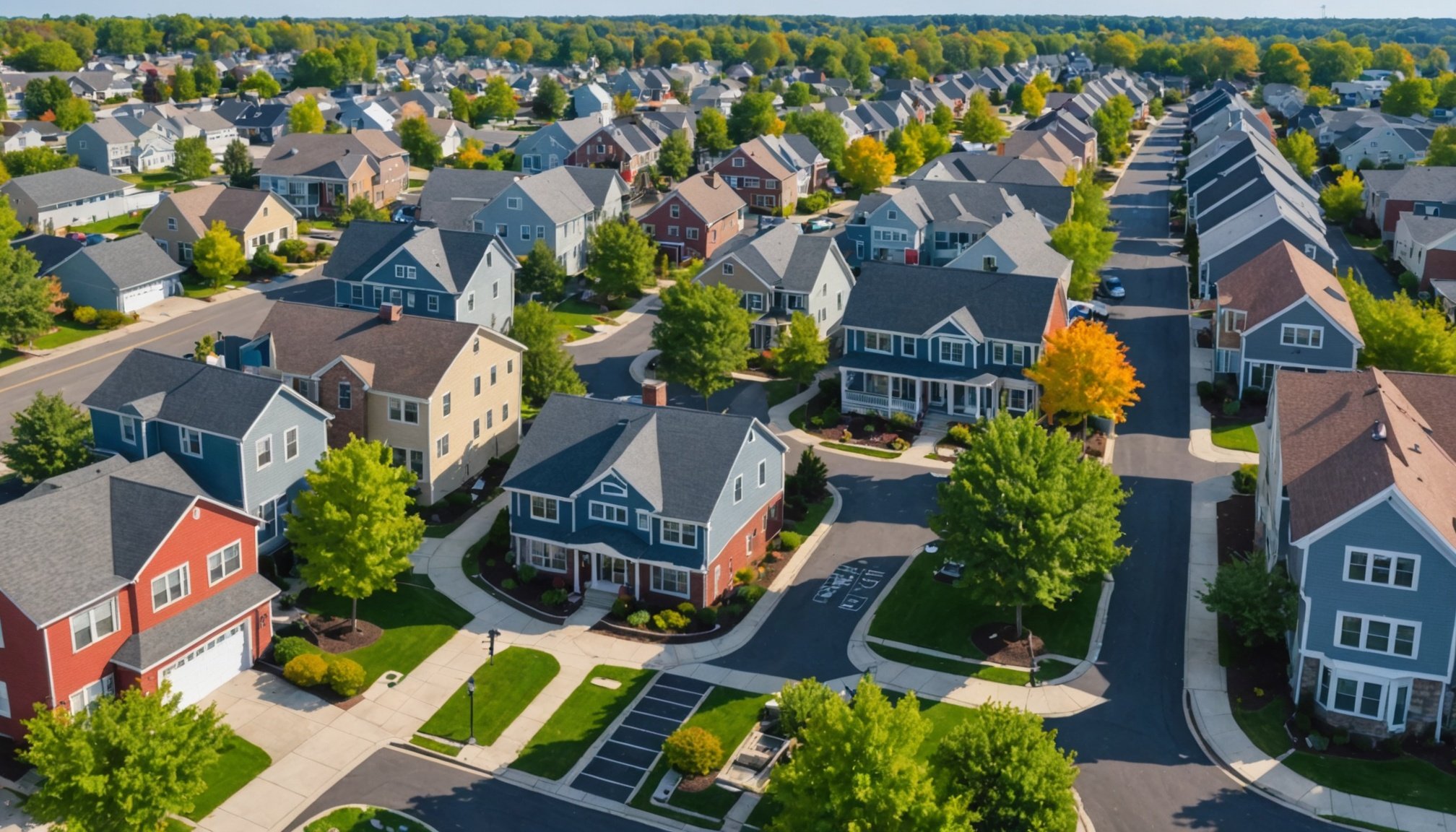Transforming Real Estate into a Catalyst for Community Health: Cutting-Edge Approaches for Vibrant Neighborhoods
As we navigate the complexities of modern living, it’s becoming increasingly clear that the places we live, work, and interact have a profound impact on our health and well-being. The real estate sector, once primarily focused on providing shelter and investment opportunities, is now evolving to play a critical role in fostering community health. Here, we delve into the innovative approaches and strategies that are transforming real estate into a catalyst for healthier, more vibrant neighborhoods.
The Rise of Wellness-Oriented Real Estate
The concept of wellness-oriented real estate is no longer a niche idea but a burgeoning trend that is reshaping the estate market. Developers are now prioritizing designs that promote physical, mental, and emotional well-being.
Also to see : Unlocking sustainable real estate financing in the uk: the role of green bonds
Key Drivers of the Wellness Real Estate Market
-
Increased Consumer Awareness: As people become more health-conscious, they are seeking properties that align with their wellness goals. This shift is driven by a growing understanding of how living environments impact overall health[2].
-
Developer Investments in Wellness Infrastructure: Real estate developers are investing heavily in wellness features such as air purification systems, natural lighting, and green spaces. These features not only improve living conditions but also enhance the quality of life for residents[2].
Have you seen this : Effective strategies for boosting the promotion of new condominium developments
-
Rising Demand for Sustainable and Green Living Spaces: Sustainability is a major driver, with consumers demanding eco-friendly homes and commercial spaces. Developers are incorporating sustainable materials, energy-efficient systems, and renewable energy solutions into their projects[2].
Innovative Developments in Wellness Real Estate
Several key players are at the forefront of this transformation, setting new standards for wellness-oriented real estate.
Delos Living: Pioneering Wellness in Built Environments
Delos Living has been a leader in integrating wellness features into residential and commercial spaces. Their recent partnerships with health and technology brands have led to the incorporation of advanced air purification systems and circadian lighting solutions. These initiatives underscore their commitment to promoting physical and mental well-being within built environments.
- Advanced air purification systems
- Circadian lighting solutions
- Integration with health and technology brands
- Focus on physical and mental well-being
Welltower Inc.: Focusing on Senior Living and Healthcare-Centric Properties
Welltower Inc. is dominating the wellness real estate space, particularly in senior living communities and healthcare-centric properties. Their recent joint venture with a healthcare provider to create wellness-focused urban senior living facilities aligns with the growing demand for integrated health and living solutions[2].
The Related Companies: Eco-Friendly and Biophilic Designs
The Related Companies are known for their luxury wellness offerings and are expanding their portfolio with eco-friendly residential and mixed-use developments. A recent project in New York City features state-of-the-art biophilic designs, energy-efficient technologies, and community spaces designed to foster mindfulness and connection with nature[2].
The Role of Connected Health in Real Estate Development
Connected health technologies are becoming integral to the development of healthy living spaces. Initiatives like the Connected Health Collaborative Community (CHcc) are paving the way for innovative healthcare delivery models.
Hospital-at-Home Models: A New Frontier in Healthcare
The CHcc, launched by the Digital Medicine Society (DiMe) in collaboration with the Consumer Technology Association (CTA) and UMass Chan Medical School, is advancing hospital-at-home models. These models utilize connected health technologies to provide inpatient-level care in patients’ homes, leading to cost savings, better resource management, and improved patient satisfaction[1].
- Cost savings
- Better resource management
- Improved patient satisfaction
- Reduced healthcare spending
- Enhanced patient outcomes
Urban Development and Community Health
Urban development is not just about building homes and commercial spaces; it’s about creating vibrant, healthy communities. Here are some cutting-edge approaches that are making a difference.
Mixed-Use Developments: Integrating Housing, Healthcare, and Community Spaces
Mixed-use developments are becoming increasingly popular as they integrate housing, healthcare facilities, and community spaces. These developments foster a sense of community and provide easy access to healthcare services, promoting overall well-being.
- Integration of housing and healthcare facilities
- Community spaces for social interaction
- Easy access to healthcare services
- Promoting a sense of community
Green Real Estate and Net Zero Homes
Green real estate and net zero homes are no longer just labels but a reality. Developers are incorporating eco-friendly materials, energy-efficient systems, and renewable energy solutions to create homes that are not only sustainable but also healthy.
| Feature | Description |
|---|---|
| Eco-Friendly Materials | Use of sustainable materials like bamboo, recycled wood, and low-VOC paints. |
| Energy Efficiency | Installation of energy-efficient appliances and smart home systems. |
| Renewable Energy Solutions | Integration of solar panels, wind turbines, and geothermal heating systems. |
| Green Spaces | Incorporation of green roofs, gardens, and natural areas within urban developments. |
| Air Purification Systems | Advanced systems to improve indoor air quality. |
Policy Changes and Community Engagement
Policy changes and community engagement are crucial in transforming real estate into a catalyst for community health.
Local Authorities and Asset Management
Local authorities are playing a significant role in promoting healthy urban development through asset management strategies. For instance, city councils are implementing policies that encourage the development of green real estate and mixed-use projects.
- Encouraging green real estate developments
- Promoting mixed-use projects
- Implementing sustainable asset management strategies
- Collaborating with developers to integrate wellness features
Community Engagement and Social Housing
Community engagement is vital in ensuring that real estate developments meet the health and well-being needs of the community. Social housing projects, for example, are being designed with community health in mind, incorporating features like community gardens and health clinics.
- Community gardens and green spaces
- On-site health clinics and wellness programs
- Community engagement in development planning
- Integration with local healthcare services
Practical Insights and Actionable Advice
For those looking to invest in or develop real estate with a focus on community health, here are some practical insights and actionable advice:
Conduct Thorough Market Research
Understand the local market and the demand for wellness-oriented properties. This includes researching consumer preferences and the competitive landscape.
Collaborate with Health Experts
Collaborate with healthcare professionals and wellness experts to design properties that meet the health and well-being needs of residents.
Invest in Sustainable Technologies
Invest in sustainable technologies such as energy-efficient systems, renewable energy solutions, and advanced air purification systems.
Engage with the Community
Engage with the local community in the development process to ensure that the project meets their needs and fosters a sense of community.
Transforming real estate into a catalyst for community health is a multifaceted endeavor that requires innovation, collaboration, and a deep understanding of the interplay between living environments and health outcomes. As we move forward, it’s clear that cutting-edge approaches in wellness real estate, connected health technologies, and urban development will play a pivotal role in creating vibrant, healthy neighborhoods.
In the words of Jennifer Goldsack, CEO of DiMe, “By harnessing the potential of digital health and uniting diverse experts in the field, this new initiative will drive the widespread adoption of these models, ensuring more patients have access to high-quality care where they need it most.”[1]
As we embark on this journey, it’s essential to remember that the future of real estate is not just about building homes, but about creating healthy, sustainable communities that thrive for generations to come.









